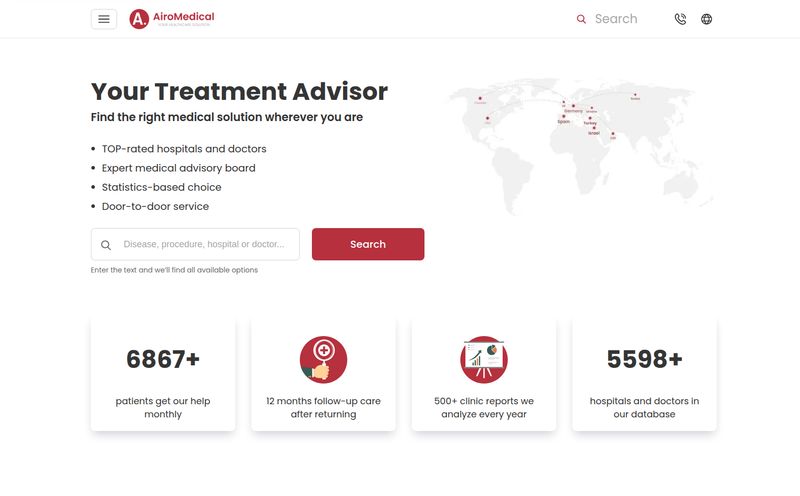You know that feeling, right? That little jolt of excitement you get when you stumble across a new tool that promises to solve all your problems. For me, as someone who lives and breathes SEO and traffic, finding a slick new lead management platform is like finding a twenty-dollar bill in an old coat. It’s a good day.
So, a little while ago, I heard whispers of a tool called Leadflowy. The name itself was promising. It suggests a smooth, effortless flow of leads, like a calm river guiding prospects right to your sales team. I was intrigued. I pictured elegant dashboards, intuitive contact management, and maybe even some clever automation to nurture those precious leads. I went to check it out, ready to be wowed.
And I found… well, nothing. A digital ghost town. An empty storefront with a “Sorry, we’re closed” sign that looks permanent.
So, What Was Leadflowy Supposed to Be?
From the digital breadcrumbs left behind, Leadflowy was billed as a “lead relationship manager.” In our world, that’s basically a Customer Relationship Management (CRM) system with a sharp focus on the front-end of the sales process. It’s not just about storing contacts; it's about managing the journey from a curious visitor to a qualified lead, and then hopefully, to a happy customer.
Think of it as the Marie Kondo for your sales pipeline. Its job is to take the messy, chaotic pile of incoming interest—from contact forms, email campaigns, social media, etc.—and neatly organize it. It helps you see who to talk to next, what to say, and when you last reached out. Forgetting to follow up? A good lead manager won't let you. A hot lead going cold? It should be flagging that for you, big time.
A tool like this is supposed to bridge the classic gap between the marketing team (who generates the traffic) and the sales team (who has to close the deals). And I’m always, always on the hunt for tools that make that handoff smoother.

Visit Leadflowy
A Little Digital Forensics
Instead of a slick landing page, I was met with the all-too-familiar WordPress error: “Oops! That page can’t be found.” Another version of the page just said, “Sorry, no posts matched your criteria.” It’s the digital equivalent of a dial tone.
Now, my curiosity was really piqued. I did a little digging. The site was built on WordPress, using a theme called “Basis-Base.” Not exactly a premium, high-octane theme, which might suggest this was a startup on a shoestring budget or maybe even a solo developer's passion project. Nothing wrong with that; some of the best tools start that way.
But here’s the interesting clue: the site had Google Tag Manager installed. For the non-nerds, that’s a pretty serious tool for managing analytics and marketing scripts. You don’t install GTM unless you’re serious about tracking user behavior, conversions, and ad performance. It’s not something you do on a whim. This tells me that someone, at some point, had real plans for Leadflowy. They were gearing up for launch, ready to measure their CPC, track their funnels, and generate some serious traffic.
And then… they just vanished.
Why We're All Chasing the Leadflowy Dream
The disappearance of Leadflowy is a bit of a bummer, because the promise of it is something every business needs. Why is good lead management so important? I’ve seen it firsthand, time and time again. Without a solid system, you’re just pouring water into a leaky bucket.
A good lead management system is the difference between chaos and control. It ensures that every lead gets the attention it deserves. It automates the tedious follow-ups that sales reps hate, freeing them up to do what they do best: build relationships and sell. It provides data that helps you understand which of your marketing channels are actually working, so you can double down on what’s effective and cut the dead weight. Honestly, not having a CRM or lead manager in this day and age is like trying to run a shipping company using only paper maps. You might get there, but it’s going to be slow, messy, and you’ll probably lose a few packages along the way.
The Hypothetical Awesomeness of a Working Leadflowy
Let's just daydream for a minute. If Leadflowy had made it, what would it have been? I imagine something clean and simple, a direct response to the bloated, overly complex CRMs that feel like you need a PhD to operate.
Here’s what I’d hope to see in a tool named Leadflowy:
- A Visual Pipeline: A simple, drag-and-drop Kanban-style board to move leads through stages. So satisfying.
- Effortless Automation: Simple “if this, then that” rules for follow-up emails. For example, if a lead downloads a whitepaper, automatically send them a follow-up email three days later.
- Smart Lead Scoring: A system that automatically scores leads based on their activity, so your sales team always knows who the hottest prospects are.
- No-Nonsense Pricing: Maybe a straightforward monthly fee without a million add-ons and confusing tiers. A guy can dream, cant he?
So, What Are We Supposed to Use Instead?
Okay, so we can’t use Leadflowy. It's a ghost. But the need for a great lead manager is very real. The good news is, there are plenty of fish in the sea. Some might argue there are too many. Here are a few of my go-to recommendations, depending on who you are.
For those just starting out or running a small team, I often point them towards the free tier of HubSpot. It’s ridiculously powerful for a free tool and gives you a taste of a fully integrated marketing and sales platform. Another great option is Pipedrive, which is famous for its visual sales pipeline and user-friendly interface. It truly focuses on the “flow” that Leadflowy was probably aiming for.
If you're more of a solopreneur or freelancer who needs to manage professional relationships more than a high volume of sales leads, you might want to check out something like Folk. It’s like a CRM that feels more like a personal address book on steroids. Very slick.
And of course, for the big players, there’s always Salesforce. It’s the 800-pound gorilla of the CRM world for a reason. It can do anything, but be warned: it comes with a steep learning curve and a price tag to match.
Frequently Asked Questions about Lead Management
What was Leadflowy?
Leadflowy was intended to be a lead relationship manager, a type of software designed to help businesses organize, track, and nurture potential customers. However, the website is currently inaccessible, suggesting the project is defunct or on indefinite hold.
Can I use Leadflowy today?
No. As of late 2023 and early 2024, the website for Leadflowy is not functional. It displays error messages, and there is no way to sign up or use the tool.
What exactly is a lead relationship manager?
It's a system (often called a CRM) that acts as a central database for all your leads and prospects. It goes beyond a simple contact list by helping you track every interaction, manage your sales pipeline, automate communication, and analyze performance to improve your sales and marketing efforts.
Why is lead management important for SEO?
It's crucial! As an SEO, my job is to generate traffic and leads. But if those leads aren't handled properly, all that hard work is wasted. A good lead management process ensures that the traffic we bring in has the best possible chance of converting into actual business, proving the ROI of our SEO campaigns.
What could have happened to Leadflowy?
It's impossible to say for sure, but in the startup world, this is a common story. The project could have run out of funding, the developer could have moved on to other projects, or it could have simply failed to find a market. It serves as a good reminder that a great idea is only the first step.
Are there any good free lead management tools?
Yes! Several companies offer very generous free plans to get you started. HubSpot's free CRM is probably the most well-known and powerful. Other options like Zoho CRM and EngageBay also have compelling free tiers that are perfect for small businesses.
A Final Thought on Digital Ghosts
The story of Leadflowy is a classic digital mystery. It’s a cautionary tale about how even promising ideas can fizzle out in the fast-moving tech world. It’s a reminder of the hundreds of tools and startups that don't make it to the big leagues.
But it's also a great reminder of the problem they were trying to solve. The need for a smooth, intuitive, and effective way to manage leads is more pressing than ever. While we may never get to experience Leadflowy, its ghost pushes us to keep searching for—or building—the perfect tool to turn our hard-earned traffic into lasting business relationships. The hunt continues!



